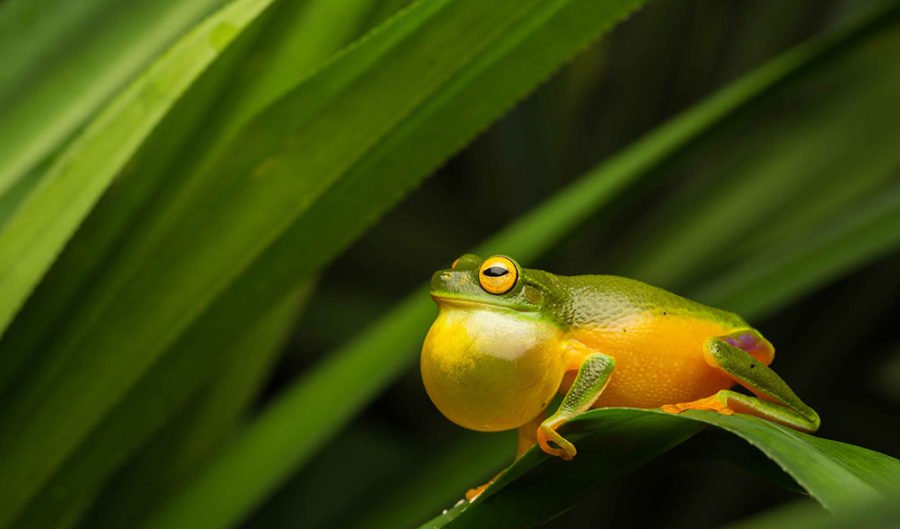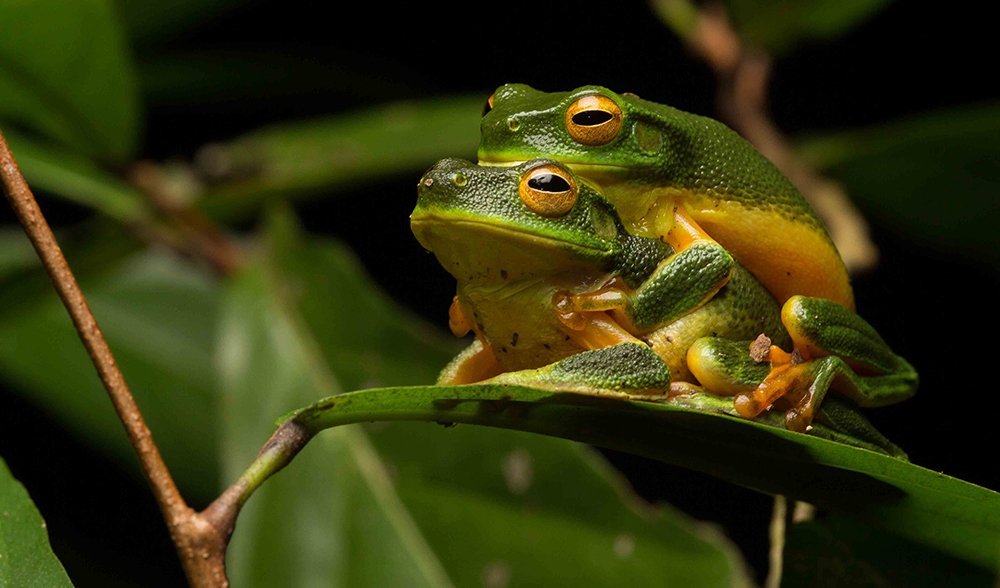New frog species discovered in remote North Queensland

A STRIKING NEW frog species named the Cape York graceful tree frog (Litoria bella) has been discovered by scientists in Far North Queensland. Closely resembling its southern relative the dainty tree frog (Litoria gracilenta), the Cape York graceful tree frog had previously avoided detection.
Despite the physical similarities, the Cape York graceful tree frog differs from its close relative through morphology, genetics and call. The newly-discovered species is more closely related to a New Guinea species, Litoria auae, than to the dainty tree frog it’s mistaken for

The Cape York graceful tree frog has evaded detection by looking so similar to the dainty tree frog. (Photo credit: Jasmine Vink)
Keith McDonald, Jodi Rowley, Stephen Richards and Greta Frankham detailed the discovery in the most recent Zootaxa journal. Found from Moa Island down to around 20km south of Coen, it has a patchy distribution through Cape York. Inhabiting some protected areas across the region, there are no currently known threats to the Cape York graceful tree frog and it is not likely to be considered threatened.
With the species name translating to ‘beautiful’, this green and yellow frog with purple thighs certainly lives up to its name. Like most species in its genus, the Cape York graceful tree frog is arboreal, meaning it lives above ground in trees and shrubs. Unlike its close relative the dainty tree frog, which thrives in suburban and disturbed areas, the Cape York graceful tree frog prefers monsoon rainforests and vine thickets closely associated with water.

A pair of Cape York graceful tree frogs in a process known as amplexus, where the male clasps onto the females back in preperation for egg laying and external fertilisation. (Photo credit: Jasmine Vink)
The frogs breed after heavy rain during the wet season, generally from December to February. During this time the males will call from low vegetation in inundated still pools water. Their call is a drawn out and unmistakable screech that can be earsplitting over peak breeding times. Once the female has found a suitable partner, she will allow him to clasp onto her back in a process known as amplexus. The male will stay here defending his position until he is able to fertilise the female’s eggs as she lays them in the water.
Fom the eel-tailed cat fish (Tandanus tropicanus) hidden in plain sight to the never-before-recorded Cape Melville lead-tailed gecko (Saltuarius eximius), Far North Queensland has had a recent influx of newly-discovered species. This is an exciting time to be exploring the remote far north – it’s likely more species will be added to the growing list in the future.
READ MORE:
- Time is running out for these seven frog species
- Vietnam’s huge flying frog
- The frog that looks like a turtle
- Cloning brings back extinct frog from the dead

